New infrared map of giant moon Ganymede
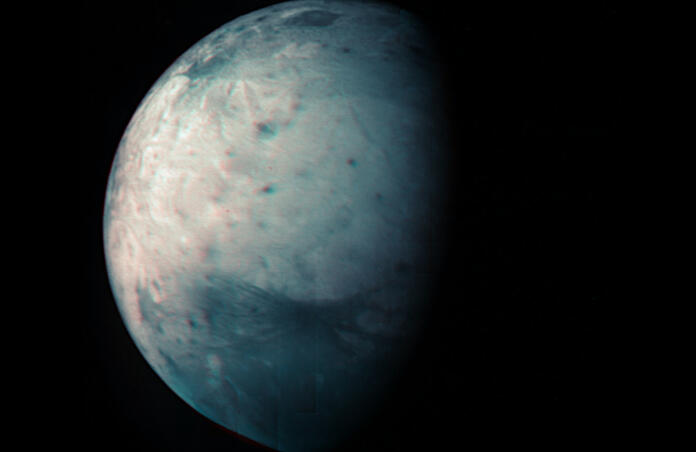
For its tenth birthday, NASA’s Juno spacecraft was given an unprecedented view of the Solar System’s largest Moon: Jupiter’s Ganymede.
In a recent article about the mission’s study of the Jovian system, it’s Ultraviolet observations that revealed something new, in this case water vapour in Ganymede’s atmosphere. Now it’s an infrared view that provides astronomers with the first glimpse at the moon’s north polar region. What’s so fascinating about this moon is that it’s larger than planet Mercury - yet researchers hope that the new Juno data will help then understand the formation of all of Jupiter’s 79 moons better. The 4 Galilean moons, which include Ganymede as well as Io, Europa and Callisto, are the largest ones and can easily be seen with binoculars or a small telescope, just like when Galileo Galilei first detected them in 1610 (on a historical note, the German astronomer Simon Marius claimed to have seen them around the same time but didn’t publish his findings).
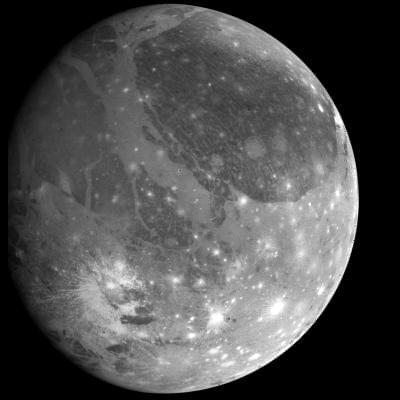
Ganymede from Galileo 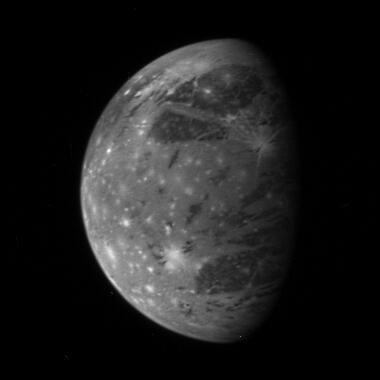
Ganymede from New Horizons 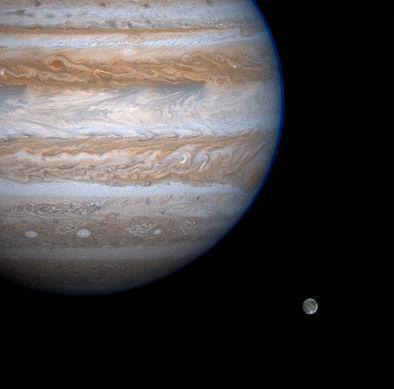
Jupiter and Ganymede from Cassini
Since then, multiple missions have reached the Solar System’s giants, including Galileo (launched in 1998, operational 1995-2003) which discovered that Ganymede has a magnetic field of its ow and New Horizons, Cassini and Voyager fly-bys which helped produce the first maps of the moon. Using the Jovian Infrared Auroral Mapper (JIRAM) instrument on Juno, as the name suggests, it’s a detailed infrared map of Ganymede that the scientists have produced.
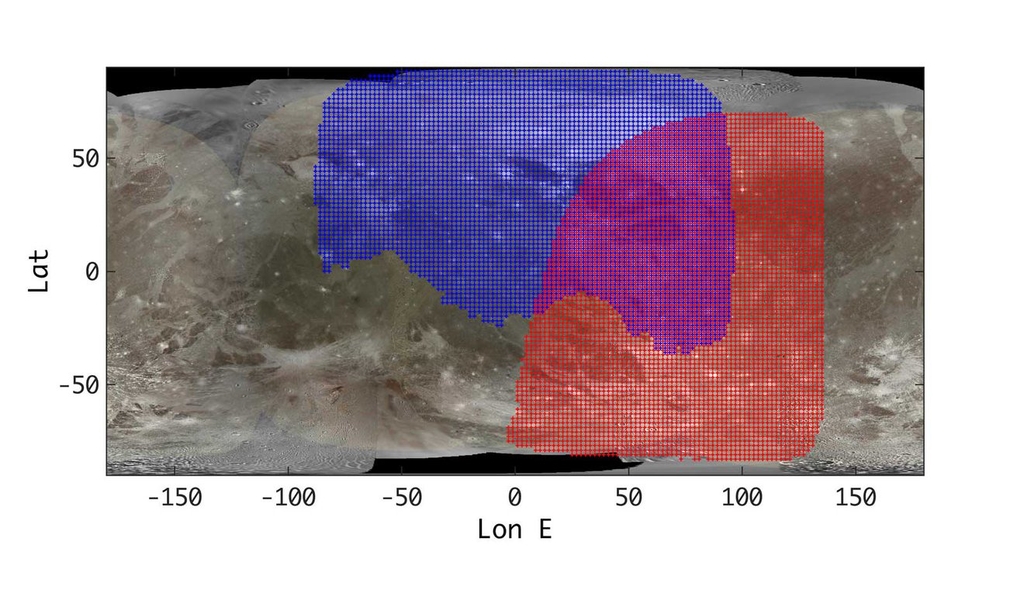
This gives new clues as to the composition of the ocean of liquid water that lies below Ganymede’s surface; additionally, it was found that at high latitudes the surface water ice has a fine grain size because of the constant bombardment with plasma from Jupiter’s magnetosphere, whereas nearer the equator of the moon its magnetic field “protects” the ice. On one hand, this is a key step to understand how “space weather” affects an icy surface, in that case that of a moon that doesn’t have an atmosphere to protect it. Moreover, this means that at lower latitudes the chemical composition is much closer to the original one, including salts, minerals and possibly organic molecules. As is often the case when such compounds are found, this opens up astrobiologists’ imagination: the habitability of Ganymede’s (and Europa’s) subsurface ocean is a hot topic within that community.
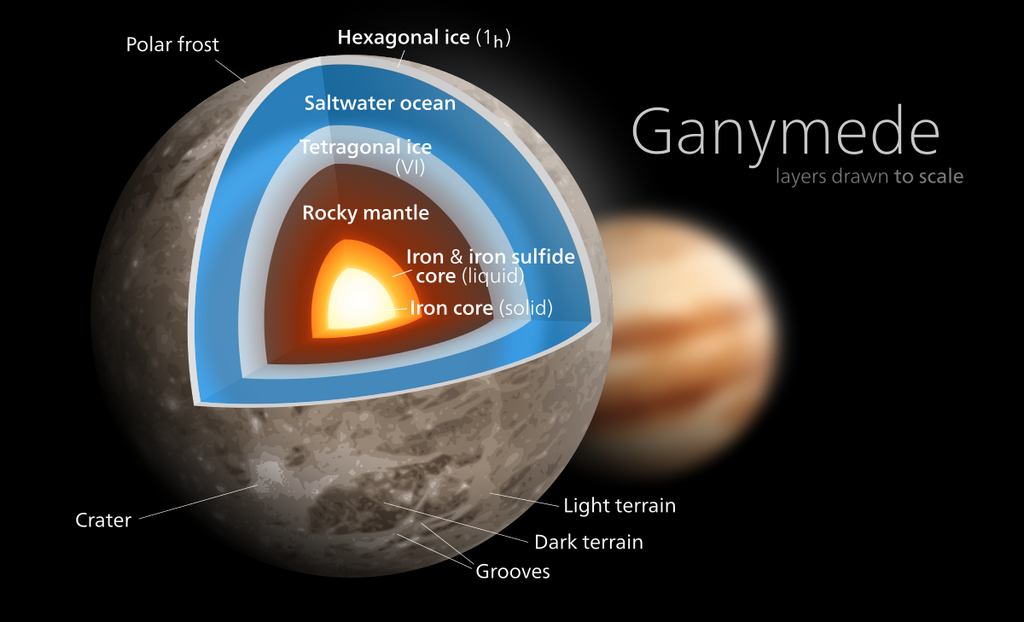
It is in fact Europa that attracts more attention at the moment – NASA’s mission Europa Clipper, due to launch in 2024, will be the first American probe to exclusively study a moon other than Earth’s Moon, and the agency also hopes to send a Europa Lander later during this decade to further analyse the ocean of the icy moon. ESA’s JUpiter ICy moons Explorer (JUICE), that should fly next year, will spend some time orbiting Ganymede before moving on to Europa and Callisto. All this is done not just for the search for life within the Solar System, and to grasp the complex interactions within the Jovian system and its many moons, but also to help model such interactions in other, exoplanetary systems with gas giants.
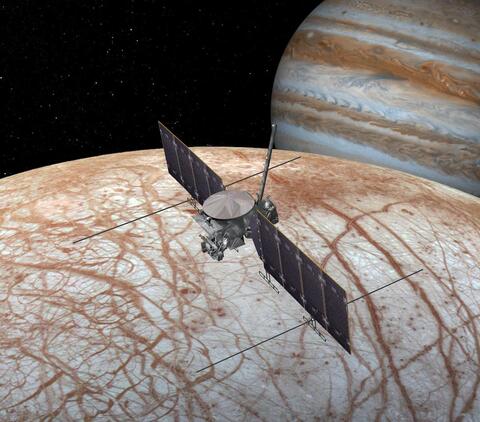
Clipper 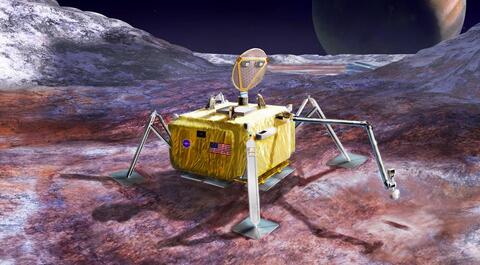
Lander 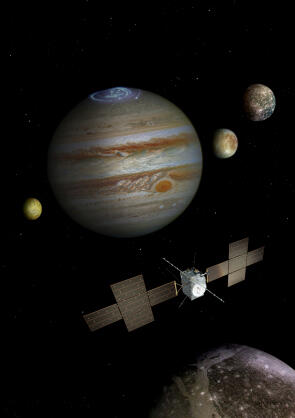
JUICE
JIRAM's Infrared mapping of Ganymede paves the way for the many upcoming studies of this Galilean moon, and more generally the data could serve to get insights into the formation of moons around gas giants, as well as processes which still affect them to this day.
Cover Image: IR view of Ganymede from Juno, NASA/JPL-Caltech/SwRI/ASI/INAF/JIRAM
Image Credits:
1 - Ganymede, NASA/JPL/Galileo Probe
2 - Ganymede, NASA/Johns Hopkins University Applied Physics Laboratory/Southwest Research Institute
3 - Ganymede and Jupiter, NASA/JPL/University of Arizona
4 - Annotated map, NASA/JPL-Caltech/SwRI/ASI/INAF/JIRAM
5 - Internal Structure, K. Song for Wikemedia Commons
6 - Europa Clipper, NASA/JPL-Caltech
7 - Europa Lander, NASA/JPL-Caltech
8 - JUICE, ESA
